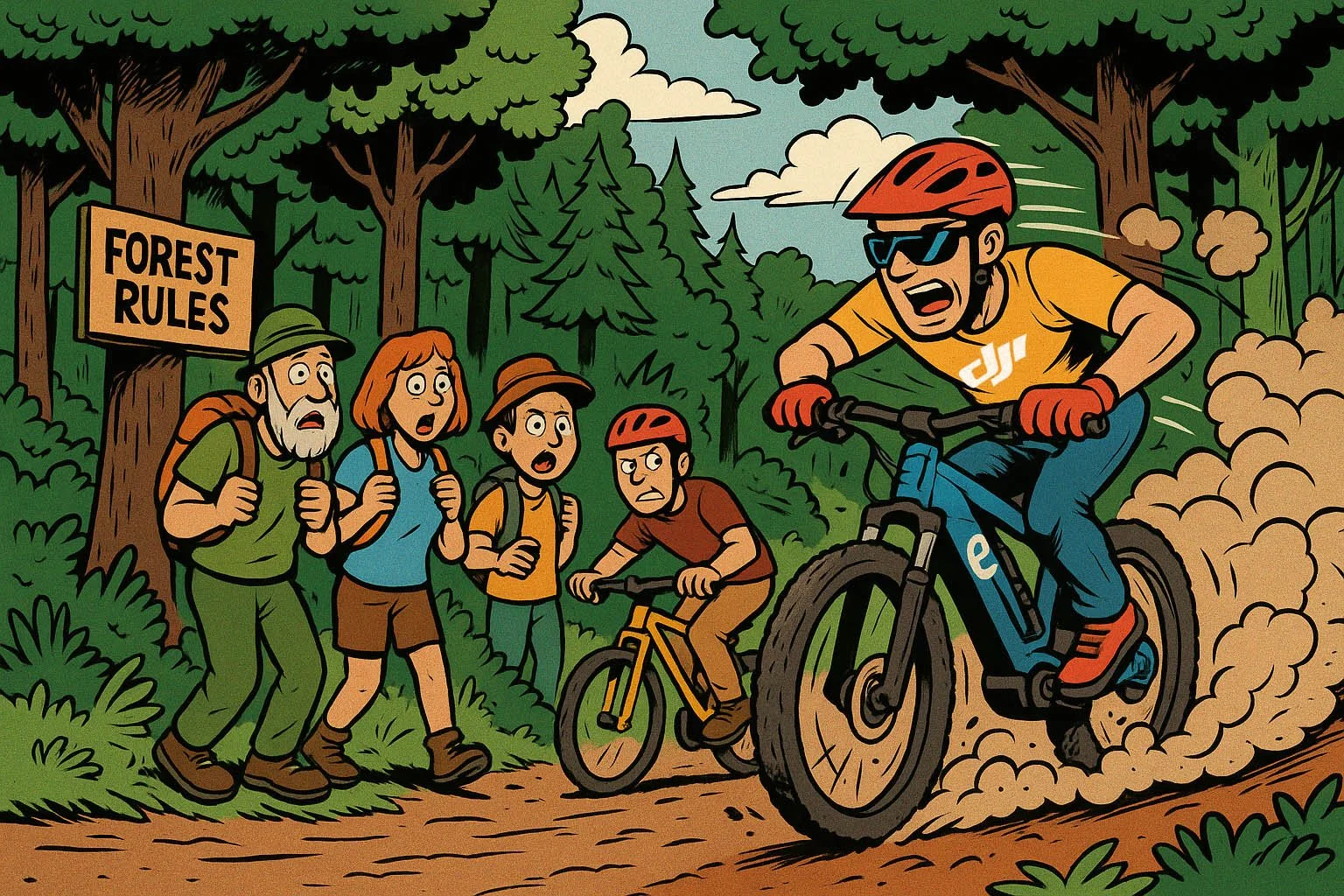E-Bikes and the race for power. Did dji avinox start the needed conversation?
Reading time: 3 minutes
More travel. More gears. More torque. More battery life. Whether you're riding a regular MTB or an electric-assisted one, the bike industry loves pushing for more. While traditional mountain bikes seem to have plateaued, the spotlight in development is now firmly on motors and batteries. E-bikes are the new frontier—not just on trails, but in legal gray zones too.
In the EU, trail access for e-MTBs is mostly unrestricted. But in the U.S., it's still a fight in some areas. So here’s the question: Is pushing more power really doing the industry any favors? Do we even need it?
Enter DJI and their Avinox system, which shook up the scene in a big way.
The Role of Standards
Most riders have never heard of DIN EN ISO 4210 or DIN EN 15194, but these standards quietly keep us safe. Far from perfect (and worthy of a separate article), they at least set a baseline for what bikes—especially e-bikes—must endure under normal use.
You may have also noticed ASTM codes on bikes. These are U.S.-based standards from the American Society for Testing and Materials. When it comes to e-bikes, the regulations pile up. Not only must they follow traditional bike standards, but they also have to account for motors and batteries.
It gets even messier. For example, you can’t fly with your e-bike because of battery restrictions. That’s just a glimpse into the regulatory jungle manufacturers are navigating behind the scenes.
E-MTB Development: The Arms Race
E-MTBs have evolved fast. Early motor systems were a revelation—suddenly, steeper trails and longer rides became accessible. The industry marketing departments was happily pushing this narrative and customers enjoyed the new category of high end sporting good. Naturally, the R&D race began: more power, more range, better everything.
That chase led to heavier bikes—bigger batteries, 29” wheels, more robust frames. Soon, 25 kg bikes became the norm. Climbing was still a blast, but descending? Less so. Agility went out the window.
In response, new players like FAZUA offered lightweight systems that prioritized ride feel over raw power. A new balance was struck—until DJI came along and flipped the script.
DJI’s Avinox System: A Game-Changer?
At Eurobike 2024, DJI—the drone giant—dropped the Avinox motor system. It made headlines instantly.
Lighter weight. Faster-charging batteries. Full power, but still agile. The media buzz was huge, and test riders were impressed. The Avinox system seemed to deliver everything we’d been asking for. Stronger than anything else on the market, and wrapped in a sleek, light package.
But how’d they do it?
The Power Game: Legal but Controversial
In the EU, motors must not exceed 250 W continuous mechanical power. But there’s wiggle room—peak power can go higher as long as it doesn’t cause overheating or damage. That’s the loophole DJI appears to be riding.
In the U.S., it's different. For example, California allows e-bikes up to 750 W peak power to still qualify as Class 1—no license, registration, or insurance required. Much easier to handle.
Looking on some of the key players in the power game. You will notice which manufacturer is affected by some local regulations and who is not.
| Motor System | Torque | Power |
|---|---|---|
| TQ HPR 120S | 120 Nm | 920 W |
| DJI Avinox | 120 Nm | 1000 W |
| Bosch CX Gen5 | 85 Nm | 600 W |
| Specialized Turbo Levo 4 | 111 Nm | 720 W |
So is the power race over, limited by global rules? Or will we start seeing region-specific software versions—like 25 km/h in Europe and 20 mph in the U.S.? Probably.
In the U.S., organizations like PeopleForBikes had to fight hard for e-MTB access to MTB trails. DJI’s approach could stir similar debates all over again.
Was This DJI’s Marketing Play?
Did DJI push the limits to make a statement? Nobody except DJI will know an answer on this. From a marketing perspective, it was brilliant. Free press and talks all over the internet. We are talking really big numbers here compared to other launch efforts from their competitors. They got everyone talking.
"I don’t care what they say, as long as they say something." – Henry Ford
Planned or not, the result is clear: ask dedicated e-bikers for their top three motor brands, and DJI is now on that list. That kind of brand recognition? Priceless.
Let’s Talk About Impact
This moment offers an opportunity to ask bigger questions. Some first ideas were floating around. At TESTPILOT, we take a neutral view—e-bikes are just one more user group in the outdoors. But it’s worth reflecting on all of our impacts on trails and nature.
Every group has its “black sheep”—people who leave trash, don’t yield to hikers, or skid through sensitive zones. The issue isn’t e-bikes. It’s behavior.
E-MTBs are fun, no doubt. But in chasing ever more power, torque, and range, have we reached a point where it’s no longer sustainable?
Want to go faster? Throttle bikes exist—and they’re a blast. But are they legal on trails? Not everywhere. Alex Boyce is currently on a crusade of digging through regulations and pushing the discussion hard. He asks uncomfortable questions if the bike media is part of the problem in embracing the power-boost-race. Jens gave his two cents about trail access in the following video.
Final Thought
DJI didn’t just release a new motor—they reignited a conversation. How much power is too much? Are we still innovating responsibly? And how do we make sure we’re riding in a way that preserves the trails for everyone?
Maybe “more” isn’t always better. But it definitely gets people talking.
More links into the rabbit hole:





